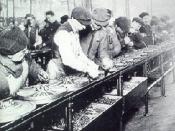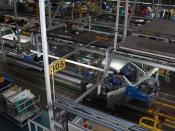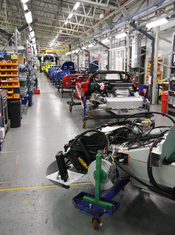Toyota Motor Manufacturing USA, Inc. (TMM) encountered product proliferation problems with defective seats due mainly to the company's deviation from its normal production plan and lack of a recovery system. In April 1992, TMM's run ratio dropped from 95% to 85%, meaning that 45 less cars were being produced per shift, which in turn translated into overtime for the workers. As a result, too many cars needed off-line operations of one type or another before they could go on to shipping. The main source of the problem was the seats defects in the cars, in which case the car would go through the assembly line with the defective seat still in it. Then the car would proceed to the Code 1 clinic area where workers would try to fix the defects, or it would be moved to the overflow parking area to await a new seat to be delivered from the supplier.
This process is an exception to the quality control process in TMM. According to Exhibit 10, in April 1992 the number of andon pulls during the first shift for the rear seat increased dramatically, from about 20 pulls in the beginning of April to about 120 pulls at the end of the month; pulls for the second shift also increased greatly. It should be noted that the seat itself poses several problems, besides those attributed by faulty processes: it is the most expensive purchased part, it is prone to damage, it is the bulkiest of all installed parts, its surface finish must satisfy customers, and it has to meet rigorous standards for the car's crash performance. Exhibit 8 shows that the most frequent defect occurrences are material flaws with the seat. There are a number of reasons that most likely contributed to the seat defect problem: 1.) The...



Well Written
A very good analysis of the Toyota case and the options which management is facing. It helped put the case into perspective.
4 out of 4 people found this comment useful.